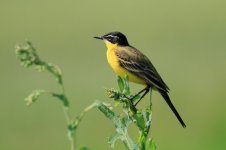crs
Well-known member
I have photographed a yellow wagtail near Brasov - Romania.
Collins Bird Guide 2nd Edition, 2009, pg 271 indicates the race "dombrowskii" (Romania). In the Opus (encyclopedia) it is mentioned:
"A couple of other forms are sometimes given names that look similar to subspecies but without formal recognition as such. These include "dombrowski" and "superciliaris".
Could you please tell me if "dombrowskii" is a race of Motacilla flava or not.
Thank you,
Cristian
Collins Bird Guide 2nd Edition, 2009, pg 271 indicates the race "dombrowskii" (Romania). In the Opus (encyclopedia) it is mentioned:
"A couple of other forms are sometimes given names that look similar to subspecies but without formal recognition as such. These include "dombrowski" and "superciliaris".
Could you please tell me if "dombrowskii" is a race of Motacilla flava or not.
Thank you,
Cristian





